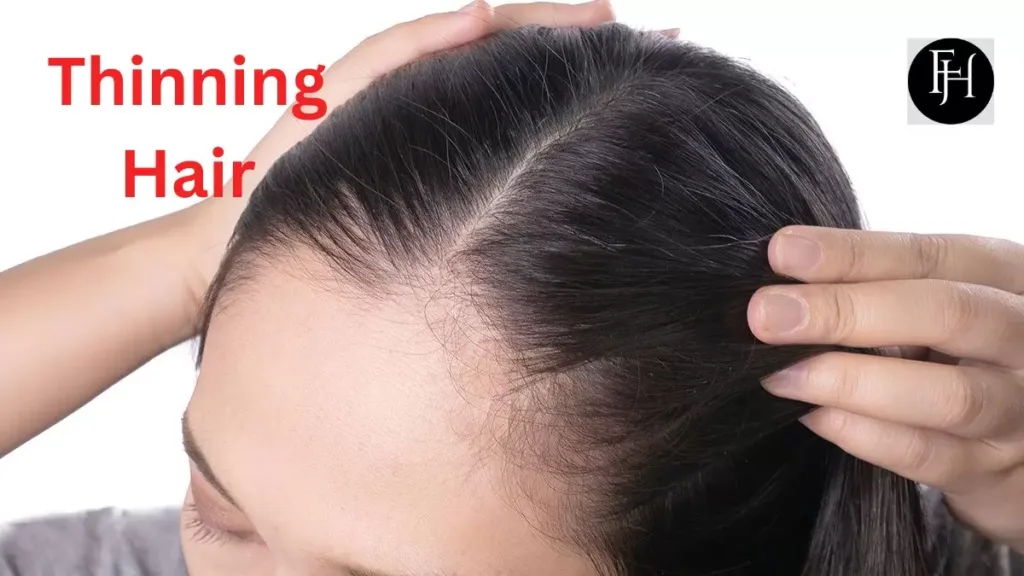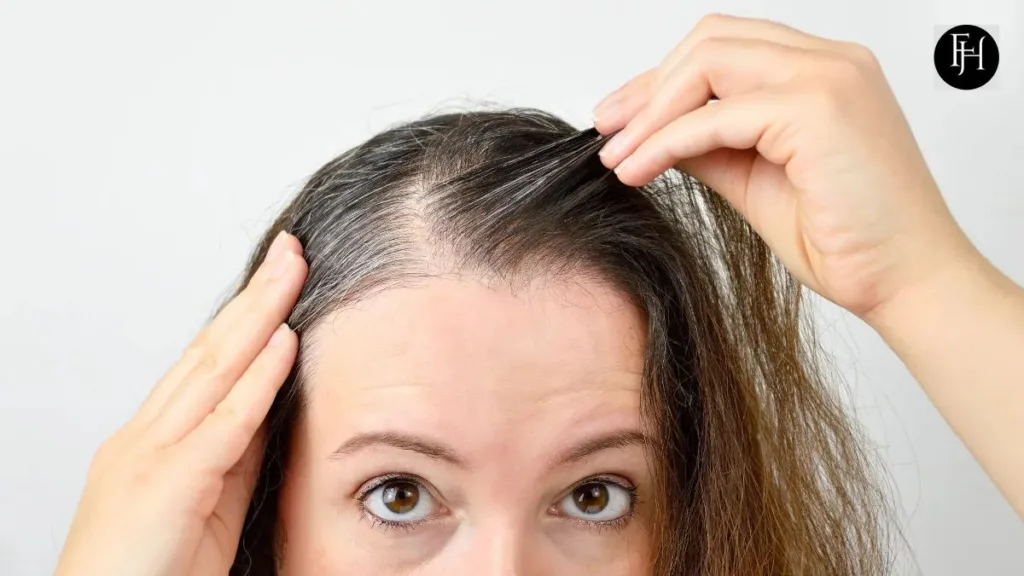Fix thinning hair in women involves various treatments and strategies to address hair loss and promote regrowth. These may include using topical medications, taking oral supplements, undergoing low-level laser therapy, or opting for hair transplant surgery.
Are you struggling with thinning hair and wondering how to fix thinning hair women? Discover effective solutions tailored specifically for women dealing with hair loss. From simple lifestyle changes to advanced treatments, find out how you can restore thickness and confidence in no time.
From using specialized hair care products to exploring medical treatments, there are numerous options available to help restore thickness and volume to thinning hair. By implementing personalized strategies and seeking professional guidance, women can effectively tackle hair loss concerns and regain confidence in their appearance.
Understanding the Causes of Thinning Hair in Women
Thinning hair in women can stem from various factors. Hormonal changes, like those during menopause, can play a significant role.Genetics, stress, and nutritional deficiencies may contribute to hair loss. Understanding these causes is crucial for finding effective solutions to address thinning hair and promote regrowth.
Other common culprits include excessive hairstyling, certain medications, and underlying medical conditions. By identifying the root cause of thinning hair, women can take proactive steps to improve scalp health and encourage thicker, fuller hair growth. Consulting with a healthcare professional can provide personalised insights and recommendations tailored to individual needs.
Signs of Thinning
Thinning hair often shows early signs like increased hair shedding and widening part lines. You notice more hair left on your pillow or in the shower drain. Another sign is the visibility of your scalp through your hair, especially around the crown area. These indicators suggest it is time to take action to prevent further hair loss and promote regrowth.
Other signs include noticing smaller ponytails or hair buns due to decreased hair density. When styling, you find it challenging to achieve the same volume and fullness as before. If you are experiencing any of these signs, it is essential to address them promptly with appropriate treatments and lifestyle adjustments to support healthy hair growth.
Lifestyle Changes to Support Hair Growth
To support hair growth, consider simple lifestyle adjustments. Ensure a balanced diet rich in vitamins and minerals like biotin, iron, and zinc. Regular exercise promotes blood circulation to the scalp, aiding in hair follicle health. Manage stress through relaxation techniques such as meditation or yoga, as stress can contribute to hair loss.
Adequate sleep is crucial for hair growth, so aim for 7-8 hours each night. Avoid harsh styling practices and opt for gentle hair care routines. Finally, stay hydrated by drinking plenty of water to keep your hair and scalp hydrated, promoting overall hair health.
Essential Nutrients for Healthy Hair
Healthy hair relies on essential nutrients. Incorporate foods rich in vitamins like A, C, and E, as well as minerals such as zinc and iron into your diet. These nutrients support hair growth and strength, promoting luscious locks from within. To hydrate adequately and maintain a balanced diet for optimal hair health.
- Protein Power: Learn about the importance of protein-rich foods like lean meats, fish, eggs, and legumes for strengthening hair follicles and promoting growth.
- Vitamin Vitality: Explore key vitamins such as Biotin, Vitamin D, and Vitamin E, essential for maintaining hair health and preventing breakage and thinning.
- Mineral Magic: Discover the role of minerals like iron, zinc, and selenium in supporting hair growth and preventing nutrient deficiencies that can lead to hair loss.
- Omega-3 Rich Foods: Delve into the benefits of incorporating omega-3 fatty acids found in foods like salmon, walnuts, and flaxseeds to nourish the scalp and improve hair texture and shine.
Choosing the Right Hair Care Products
When it comes to choosing the right hair care products, it is essential to consider your specific hair type and concerns. Look for shampoos and conditioners formulated to address issues like thinning hair, providing nourishment and volume.Opt for styling products that won’t weigh down your hair but instead add body and texture for a fuller look.
Avoid harsh chemicals and sulphates in your hair care routine, as they can strip away natural oils and contribute to further hair damage. Instead, opt for gentle, natural ingredients that promote scalp health and strengthen hair follicles. Do not forget to read product labels carefully and seek recommendations from hairstylists or dermatologists to find the best products tailored to your needs.
Effective Scalp Care Techniques
To keep your scalp healthy and promote hair growth, try these effective scalp care techniques. First, gently massage your scalp with your fingertips to increase blood flow. Next, use a mild shampoo to cleanse your scalp and remove any buildup.
| Scalp Care Techniques | Description |
| Gentle Scalp Massage | Stimulates blood flow to the scalp, promoting hair growth and relaxation. |
| Proper Shampooing | Cleanses the scalp and hair, removing dirt, oil, and product buildup without stripping moisture. |
| Moisturizing | Hydrates the scalp to prevent dryness and flakiness, promoting a healthy environment for hair growth. |
| Regular Exfoliation | Removes dead skin cells and unclogs hair follicles, preventing dandruff and promoting healthy hair growth. |
Low-Level Laser Therapy: Does It Work?
Low-Level Laser Therapy, often referred to as LLLT, is a non-invasive treatment for hair loss. It works by stimulating hair follicles and improving blood flow to the scalp, promoting hair growth. Many studies suggest that LLLT can be effective in slowing down hair loss and even promoting new hair growth in some individuals.
Individual results vary, and it is essential to consult with a healthcare professional to determine if LLLT is suitable for your specific hair loss concerns. The treatment involves using a specialized laser device that emits low levels of light directly onto the scalp. These photons are absorbed by the hair follicles, leading to increased cellular activity and the production of thicker, healthier hair.
Understanding Hormonal Factors in Hair Loss
Hormonal factors play a significant role in hair loss for women. Imbalances in hormones, such as androgens, oestrogen, and thyroid hormones, can lead to thinning hair. Understanding these hormonal fluctuations is crucial for identifying and addressing the root cause of hair loss in women.
By consulting with a healthcare provider and addressing hormonal imbalances, women can take proactive steps to promote hair regrowth and restore their confidence.Fluctuations in hormones can disrupt the hair growth cycle, resulting in thinning hair for women. Androgens, particularly dihydrotestosterone (DHT), can shrink hair follicles, leading to shorter and finer hair growth.
Prescription Medications for Hair Loss
Prescription medications for hair loss are doctor-prescribed treatments that can help women combat thinning hair. These medications work by targeting the underlying causes of hair loss, such as hormonal imbalances or genetic factors.
Common prescriptions include minoxidil and finasteride, which are known to promote hair regrowth by stimulating hair follicles. Consulting a healthcare professional is essential to determine the most suitable medication and dosage for individual needs.
Herbal Remedies and Natural Treatments
Looking for natural ways to address thinning hair? Herbal remedies offer gentle solutions. Ingredients like saw palmetto and rosemary can promote hair growth and thickness. Incorporate these natural treatments into your routine for healthier, fuller-looking hair.
Embracing herbal remedies and natural treatments can be a safe and effective approach to combating thinning hair. From essential oils to herbal supplements, these options provide nourishment and support for your scalp and hair follicles. Discover the power of nature in revitalising your hair health today!
Hair Transplant Surgery: Is It Right for You?
Considering hair transplant surgery? This procedure involves moving hair follicles from one part of the scalp to another. It is a permanent solution for hair loss, but it is crucial to consult with a specialist to determine if it suits your needs. Understanding the risks and benefits is essential before making a decision.
Hair transplant surgery can offer a solution for women dealing with uneven hairlines. By redistributing healthy hair follicles, it can create a more balanced and natural appearance, ultimately boosting confidence and self-esteem. It is essential to consider individual factors like hair type, scalp condition, and desired outcomes before pursuing this option.
Coping Strategies for Dealing with Thinning Hair

Dealing with thinning hair can be challenging, but there are effective coping strategies to help you feel confident again. Embrace hairstyles that add volume and conceal thinning spots, such as layered cuts or textured styles. Focus on self-care practices like scalp massages and stress reduction techniques to promote healthy hair growth and boost your overall well-being.
With these proactive approaches, you can tackle thinning hair with resilience and grace. When facing thinning hair, it is essential to seek support from professionals and loved ones. Consider consulting with a dermatologist or trichology’s to explore personalized treatment options and address underlying causes of hair loss.
Embracing Hairstyles to Conceal Thinning
When dealing with thinning hair, embracing suitable hairstyles can work wonders. Opt for styles that add volume and texture, like layers or curls. A well-chosen hairstyle not only conceals thinning areas but also boosts confidence instantly.
It is a chic bob or a playful pixie cut, finding the perfect look that suits your hair type and face shape. With the right hairstyle, thinning hair can be transformed into a stylish asset, enhancing your overall appearance and self-assurance.
Maintenance Tips for Long-Term Hair Health
To maintain long-term hair health, consistency is key. First, ensure a balanced diet rich in vitamins and minerals essential for hair growth. Regularly trim split ends to prevent breakage and promote growth. Lastly, minimise heat styling and protect hair from sun damage by wearing a hat or using UV protection products.
| Maintenance Tips for Long-Term Hair Health | Description |
| Balanced Diet | Consume a diet rich in vitamins, minerals, and protein to support overall hair health and growth. |
| Regular Trimming | Schedule regular trims to prevent split ends and breakage, promoting healthier and stronger hair strands. |
| Proper Hair Care Routine | Establish a consistent hair care routine including shampooing, conditioning, and styling with care. |
| Protection from Heat and Environmental Damage | Use heat protectants and avoid excessive heat styling to prevent damage from styling tools and environmental factors. |
FAQS
What are some lifestyle changes to improve thinning hair?
Eat a balanced diet, manage stress, and avoid harsh styling practices to promote hair growth and thickness.
Are there any effective topical treatments for thinning hair?
Yes, topical solutions containing minoxidil have been shown to help stimulate hair follicles and promote regrowth.
Can supplements help with thinning hair in women?
Certain supplements like biotin, iron, and vitamin D support hair health, but consult a healthcare provider first.
Is hair transplant surgery a viable option for women with thinning hair?
Hair transplant surgery can be considered for women with significant thinning, but it is important to consult a specialist.
Conclusion
Addressing thinning hair in women requires a multifaceted approach tailored to individual needs. By implementing effective scalp care techniques, ensuring a balanced diet rich in essential nutrients, and exploring appropriate treatments, women can achieve healthier and fuller-looking hair.
Proactive steps and seeking professional guidance are key in successfully tackling the issue of thinning hair. With the right strategies and persistence, women can confidently navigate the journey of How to Fix Thinning Hair for Women? and embrace a revitalized mane.

